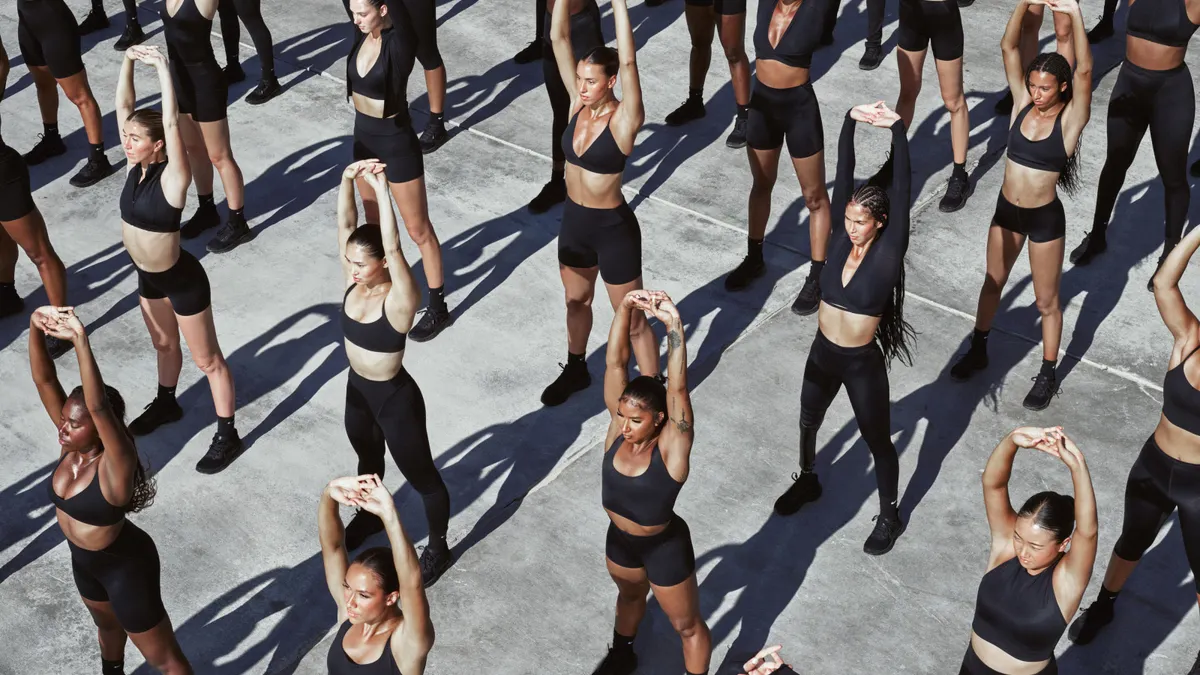Dive Brief:
- Nike CEO Elliott Hill cited “tangible progress” on the activewear brand’s turnaround Tuesday as the retailer recorded 1% revenue growth in Q1. Three priority areas — running, North America and wholesale — all posted growth in the quarter.
- On the other hand, organic traffic to Nike’s digital business was down by double digits, and the retailer said its DTC business would not return to growth this fiscal year. Nike Direct revenues were down 4% in the period, hitting $4.5 billion.
- Converse, which has a new CEO as of July, saw revenue fall 27% to $366 million. The company is conducting a global reset for the brand’s Chuck Taylor style, Hill said, but Converse will likely continue to drag down results this year.
Dive Insight:
Nike notched some wins this quarter, but still has a ways to go on its turnaround. Specifically, Hill called out Nike Direct, China and sportswear as areas that need renewed focus. Sales in China fell 9% in Q1, while sportswear also saw declines.
“Nike’s journey back to greatness has only just begun,” Hill said on a call with analysts Tuesday.
The retailer has a lot of irons in the fire in the meantime. Nike realigned 8,000 employees in the quarter as part of an effort to organize the company around key sports instead of categories like men’s, women’s and kids. That repositioning is aimed at driving deeper connections with individual sports communities and serving those customers better.
The retailer also redesigned its House of Innovation store in New York to emphasize sports-driven experiences and refreshed a store in Austin, Texas, to focus only on running and training. Both of those revamps led to increased sales, according to Hill.
At the same time, Hill touted a “very strong” early response from its NikeSkims venture with Kim Kardashian, which just debuted last week. And Nike continues to rationalize its key Jordan, Air Force 1 and Dunk franchises, which were down 30% in the quarter.
“Within the Big 3, Air Force 1 seems to have stabilized and Jordan is in the process of rebalancing supply/demand, but there's more work to do on the Dunk franchise,” Needham analysts led by Tom Nikic said in emailed comments Wednesday.
Importantly, though, Nikic noted the progress Nike has made with its wholesale partners after that channel declined in six of the last seven quarters and highlighted the fact that both fall and spring order books have been positive. Jefferies analysts likewise pointed to healthy order books and clean inventory levels as evidence that “supply is matching demand.”
“CEO Hill is acting with urgency and creating a culture of winning again which should return Nike to sustainable growth and margin improvement ahead,” the analysts, led by Randal Konik, said Wednesday, citing “clear signals that the strategy is working.”
Tariffs, in the meantime, are becoming more troublesome. While Nike last quarter said tariffs would cause a $1 billion disturbance, that has since increased to $1.5 billion on an annualized basis.
“Nike hasn’t broken the tape in its reinvention race, but today’s results count as a strong lap,” GlobalData Managing Director Neil Saunders said Tuesday. He noted the brand must now connect with a fragmented sportswear market. “This means, for example, having a very specific strategy for running, another for general fitness, another for fashion sneakers, and so forth. This is a complex play for a global conglomerate that requires new ways of working and thinking.”














